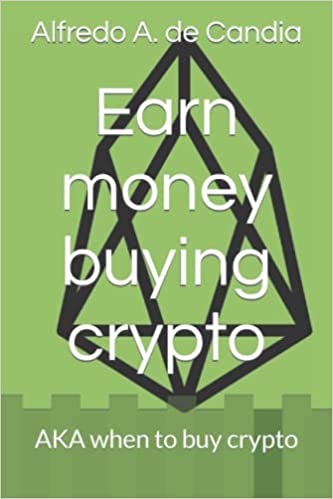When one speaks of blockchain and cryptocurrencies, easy profits come to mind, although it is not so obvious. This is why it is necessary to study and learn, from books as well, when is the best time to buy or sell crypto.
Books to learn how to trade crypto
There is obviously no magic formula. The best traders have their own strategies that follow particular indicators to skim off all the background noise generated by panic or euphoria and focus instead on the mathematical data.
And this is exactly the goal of the books “Earn money buying crypto – AKA when to buy crypto” and “Earn money selling crypto – AKA when to sell crypto”, both available on Amazon, both in Italian and English, by the author Alfredo de Candia, already author on our magazine and with other books in this area such as “Mastering EOS – Practical guide for beginners and advanced”, “Mastering DeFi – Practical guide for beginners and advanced” and “Mastering NFT – Practical guide for beginners and advanced”.
It is only through a comprehensive knowledge of mathematical formulas and indicators that it is possible to try to identify the right time to either buy an asset or sell it, given that the applied formulas and indicators make it possible to have a mathematically objective piece of data.

The structure of the books
- Have you ever bought/sold a crypto or token at the wrong time?
- Have you ever bought/sold a digital asset too late?
- After you bought/sold a crypto or token did the market go down?
These are some of the questions that plague those who have tried their hand at crypto trading with no or little knowledge of the industry.
The structure of the books is organized starting from the analysis of mathematical formulas and indicators as it is necessary to show what is behind them by providing the tools to get the same results as a professional platform. Using a simple spreadsheet, with the combination of the input data (the use of APIs is also useful) and the relevant formulas, it is possible to produce an output graph so that the starting data can be seen graphically and easily.
The explanation continues with the identification of existing indicators that reflect the mathematical formulas learned, and shows how they can be used and modified according to the needs of the user. Platforms for advanced technical analysis already exist, such as TradingView, but it is necessary to know the various indicators to use and make the most of.
And finally, there is a chapter dedicated to the examples that brings the various results of different assets analyzed and tested with various crypto and tokens. One positive result may be a fluke, two positive results may be a coincidence, but several positive results do nothing but demonstrate the effectiveness of the calculations.
 en.cryptonomist.ch
en.cryptonomist.ch